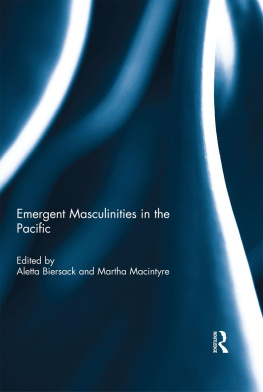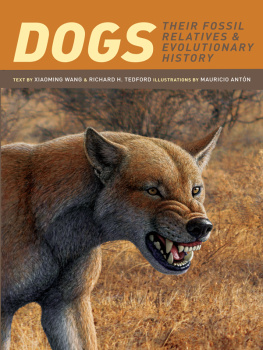First published 2018
by Routledge
711 Third Avenue, New York, NY 10017
and by Routledge
2 Park Square, Milton Park, Abingdon, Oxon, OX14 4RN
Routledge is an imprint of the Taylor & Francis Group, an informa business
2018 Taylor & Francis
The right of Nam C. Kim and Marc Kissel to be identified as authors of this work has been asserted by them in accordance with sections 77 and 78 of the Copyright, Designs and Patents Act 1988.
All rights reserved. No part of this book may be reprinted or reproduced or utilised in any form or by any electronic, mechanical, or other means, now known or hereafter invented, including photocopying and recording, or in any information storage or retrieval system, without permission in writing from the publishers.
Trademark notice: Product or corporate names may be trademarks or registered trademarks, and are used only for identification and explanation without intent to infringe.
Library of Congress Cataloging-in-Publication Data
A catalog record for this book has been requested
ISBN: 978-1-62958-266-5 (hbk)
ISBN: 978-1-62958-267-2 (pbk)
ISBN: 978-1-315-15102-1 (ebk)
Typeset in Bembo
by Keystroke, Neville Lodge, Tettenhall, Wolverhampton
Nam C. Kim dedicates this book to his parents, Chong and Hien, who experienced and survived war in two different countries and gave their children a better life in a third.
Marc Kissel dedicates this to his parents, Marcelle and Steve. While they might never have considered hed go into academia, their support was critical at every step along the way.
Both authors also dedicate the book to the memory of Larry Keeley, who has been, and continues to be, an inspiration to so many people worldwide.
The genesis of this book is somewhat unusual. Several years ago, we were sitting in a weekly brownbag lunch at the University of Wisconsin-Madison, whose conversational topic for the week was a paper suggesting warfare dated to over 800,000 years ago. Kim, as the resident warfare scholar, and Kissel, the paleoanthropologist in the room, were asked by a new graduate student what we thought of the paper and its claims. It was at that point that we experienced two significant (for us and this book) realizations that we strongly shared an interest in the earliest origins of warfare, and that we both wanted to learn more in order to better evaluate the claims of the aforementioned article. Over a series of subsequent emails and discussions, we came to further realize that there is simply a plethora of unanswered questions as to the antiquity and origins of war and the avoidance of it. We also came to appreciate what we had already suspected that research from various subfields of anthropology can provide very important insights into the question of origins. The amount of relevant research available today is simultaneously rich and staggering. This book is in essence our answer to our colleagues question all those years ago. In some sense, it is the book we wish we had when we first became interested in the topic. We hope this book will give our readers new ways to think about the origins of warfare, and offer a roadmap of sorts in their own journeys of intellectual discovery.
As scholars studying the past, we find it important to know where ideas, concepts, thoughts, and advice came from. As with all projects of this scope, so many people provided considerable help. Wed first like to thank Agustin Fuentes for his unending support and encouragement. He was the first to suggest we write a manuscript and has been a constant source of advice and critical analysis. His own research has been an important source of knowledge and inspiration for us, and it has left an indelible mark on our work. Beyond that, Agustin was instrumental for bringing this book into the light of day, shepherding it through a long journey to its final destination at Routledge.
We are also thankful to have received professional support from the editorial staff members of both Left Coast Press and Routledge. This includes Jack Meinhardt of LCP, and the fine folks at Routledge, especially Katherine Ong, Louisa Vahtrick, Marc Stratton, and Jashnie Jabson, all of whom offered useful editorial guidance and production assistance.
We have also been very fortunate to have had extensive conversations with other colleagues that have either directly or indirectly shaped our thinking and the arguments presented in this book. Various colleagues over the years helped by providing their expertise, whether through informal conversations or reviews of drafts, including Mark Allen, Susan Blum, Mary Davis, Mark Golitko, John Hawks, Rahul Oka, Travis Pickering, Sue Sheridan, Sissel Schroeder, Henry Bunn, Sarah Clayton, Michaela Howells, Mark Kenoyer, James Loudon, Chris Lynn, Carolyn Robinson, Katie Smith, and the late Neil Whitehead, Celia Deane-Drummond, Becky Artinian-Kaiser, Julia Feder, and Adam Willows. Karen Strier, in particular, provided valuable feedback and advice related to primate research literature. In addition, we have also benefitted from years of very productive classroom discussions with our students, to whom we are grateful, as these conversations have contributed to the research contained in this book.
Kim would also like to acknowledge and thank a few key individuals, starting with Jack Levy, whose course on war provided an early glimpse into anthropological theories on war. Next, Kim is indebted to Bob Carneiro, who first encouraged Kim to pursue research on war through an anthropological lens. Finally, Kim is indebted to Larry Keeley, who convinced him that archaeology was necessary to understand the evolution of war. Larry also provided invaluable insights on a draft of the book, along with its foreword, for which both Kim and Kissel are extremely grateful. Sadly, Larry passed away just months before the official publication of this book. His ideas and comments, however, still left an indelible mark.
Kissel would like to acknowledge Pam Crabtree, whose introductory class on archaeology taught him not only about prehistory but that some people are lucky enough to get to study it. John Hawks taught Kissel not just how to think about human evolution but how to be a well-rounded anthropologist. As we were writing this book, he joined the Notre Dame Anthropology Department as a postdoc. All of the faculty, grad students, and academic staff provided both insight and support. The staff and colleagues at the Centre for Theology, Science and Human Flourishing were also incredibly supportive.













